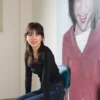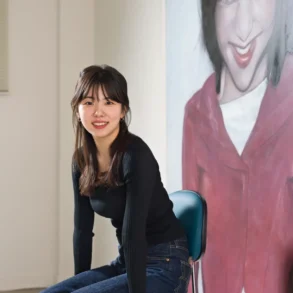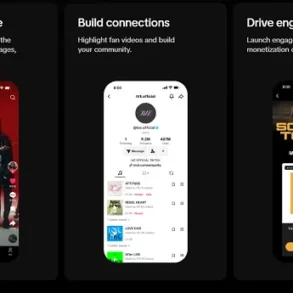
LJ Rader is ready to turn more things into art.
The man behind the viral Art But Make It Sports account is accepting commissions, ready for partnerships, and ramping up his content output with a new Substack.
But ABMIS, which matches viral sports images with classical paintings, is not making the move out of greed or a disruptive entrepreneurial spirit. Instead, Rader longs for the more intimate connections and genuine creativity he saw when he first joined Twitter and fell in love with the sports internet nearly 15 years ago.
“I’ve been on Twitter since 2010, maybe even earlier than that,” Rader recently told Awful Announcing. “And it’s sort of just part of my daily fabric, which I guess isn’t great. But I feel like if I were to ever just fully leave Twitter, it would be like letting the collective ‘them’ win in a way. It has gotten a lot more toxic and I’ve definitely been hitting the block and mute button a whole lot more than before Elon took over. They keep pushing me off by basically forcing good content to go elsewhere, but they haven’t fully gotten me yet.”
ABMIS remains one of the site’s most beloved accounts in one of its biggest verticals (sports). Rather than leave X (formerly Twitter), Rader seeks to foster a more substantive experience on the Elon Musk-owned platform while also building elsewhere.
On X, Rader feels he adds to the news of the day rather than existing under a silo. Fans are now programmed to tag or DM him whenever a new artistic-looking photo blows through social media.
“When I make a post on Twitter, especially if it just happened, it sort of contributes to an ongoing conversation, whereas Instagram is a little more like a traditional museum,” Rader explained.
ABMIS has nearly 200,000 followers on X. But the account began on Instagram in late 2019, where it now has an additional 90,000 followers but initially grew thanks to longtime ESPNer Sarah Spain.
She shared a post back when ABMIS had just 200 followers, much to Rader’s surprise.
“It doubled in size just in one day after that,” he said.
By the 2022 NBA playoffs, it was off to the races on Twitter, where Rader drew inspiration from the popular Art Or Not account. In particular, images of Draymond Green became perfect subjects as Rader polished his style of side-by-side photo posts because of the four-time NBA champion’s emotive on-court persona and hard play.
These days, Rader knows his phone photo library so well that his process has become streamlined. Rader captures photos of nearly every relevant painting whenever he visits a museum to learn about various styles and painters and cement them in his mind.
When he sees an image he wants to contrast with an art piece, he mentally scans through the around 10,000 photos on his phone before homing in on a certain era, style or artist.
Take for instance a recent scuffle between Green and Phoenix Suns center Jusuf Nurkic, which resulted in an indefinite league suspension for Green. Rader posted a comparison to a Jacopo Bertoia painting from the 1500s within hours and generated more than 100,000 views.
Venus Led by Cupid to the Dead Adonis, by Jacopo Bertoia, 1560-66, ? by @rebilasphoto https://t.co/2DMWo0Kuge pic.twitter.com/jUhUOFLnpM
— ArtButMakeItSports (@ArtButSports) December 13, 2023
“There’s a theme in art history with a few different paintings of Venus and Adonis,” Rader explained. “I wasn’t sure what the exact one might be, but I knew that was the theme I wanted to potentially see if there was an image that worked. And sure enough, there was a Venus weeping over Adonis painting that worked. Sometimes, it’s an artist’s style where I’ll see an image where I know what particular artist’s style might match.”
Earlier in 2023, Rader was sent a viral screenshot of the win probability chart for a sudden Nebraska football loss. The art lover had no trouble finding a painting that could stand in for the digitally generated line graph.
Nebraska win probability chart as 1944-N No. 2, by Clyfford Still, 1944, a yearly tradition, ? via @ChrisVannini pic.twitter.com/Ha8zDi1FMq
— ArtButMakeItSports (@ArtButSports) September 1, 2023
In a social media world dominated by constantly recycled trends and influencers, Rader’s content is shockingly old school. Even if no one would mistake ABMIS for the most influential social account online, developing any sort of sizable following around fine art is a unique accomplishment (one he hopes to expand into the political sphere with Art But Make It Politics).
Perhaps Rader makes it work because his approach is not driven by money or growth. Rader works in sports research and has no plans to make ABMIS his full-time gig.
“It definitely scratches an itch in that it keeps me entertained,” he said. “I don’t do it for money, so I just kind of do it because I know it’s good content and now there’s a whole host of people who look forward to various posts.”
So with the Substack, Rader aims to take followers behind the scenes of his process, revisit old posts, and connect more deeply with the fellow art and sports lovers who subscribe. More practically, the move also allows Rader to develop an email list of his fans and migrate them to a more stable platform outside the constantly evolving world of social media.
Rader is also open for business.
Though it’s not his main job, he has designed merch and begun exploring collaboration and commission opportunities. Rader has worked with the Utah Jazz and an Italian sports magazine, and even taken commissions to find paintings that match family photos and other personal pieces from followers.
“It’s just a hobby at the moment. I’m sure if I was doing this full-time, I would have a whole plan and be proactive,” he said. “But at the moment, it’s almost exclusively reactive. And it is now fun to try to monetize it. I don’t do it for the monetization side of things, but I’ve been doing it for a while now for free that I told myself, ‘wouldn’t it be fun to see what I could do?’”
Similar accounts like NBA Paint have been able to turn gimmicks into full-fledged businesses as social media has grown into a massive industry.
As a child of the internet age, Rader is realistic about the change he can enact. But he hopes his approach can be part of bringing social media back toward positivity and community.
That’s been his approach since the beginning. The ABMIS account bio accentuates the “NO AI USED” in all caps.
“I wanted what I was putting out there to be different,” Rader said. “I’m really not the biggest fan of some of these trends in social media where everything the algorithm speeds up is everybody doing stupid dances and food videos and it’s really nonstop of the same thing.”
Rader also wants to combat mimicry and content theft.
One way he does that is to credit the often unknown sports photographers and reporters who capture the photos he features.
“I think it’s kind of important that their names are shared with the images too,” Rader said. “And I think that’s something that resonates with people as well.”
On the Substack, Rader will collect all his posts on certain athletes or teams, walk readers through his process of finding matching paintings, and more.
So in spite of his subtle radical streak and desire to reform the sports internet, moving ABMIS to Substack and decreasing its reliance on X is not merely a protest or pushback. It is a continuation of a fairly simple mission.
To make art sports.
This post was originally published on this site be sure to check out more of their content








